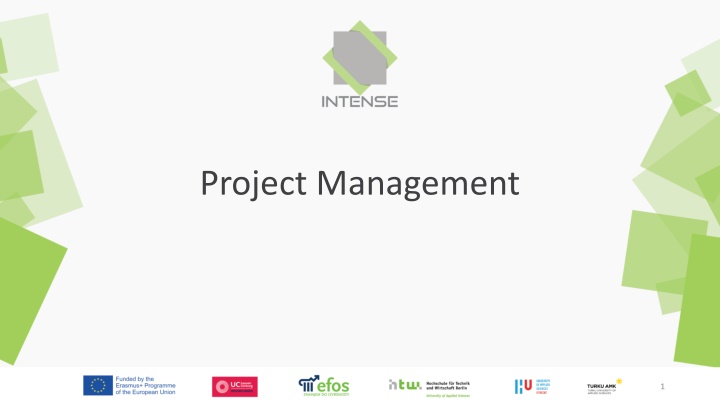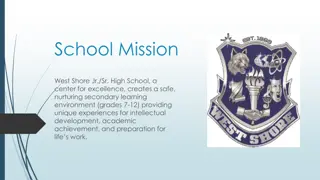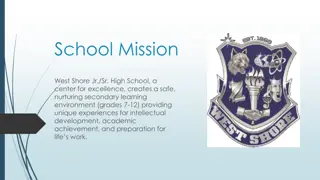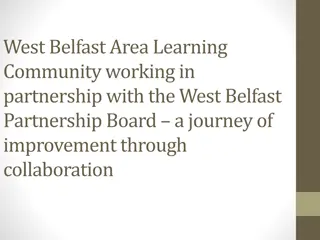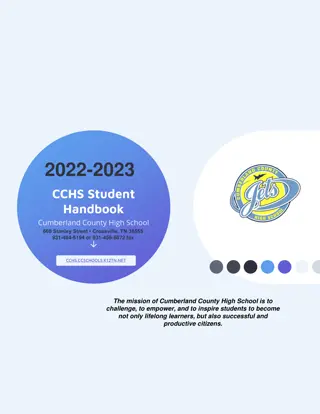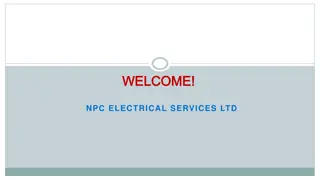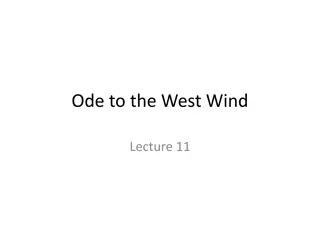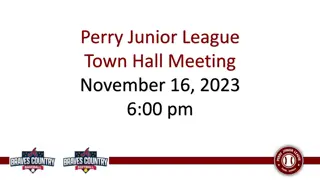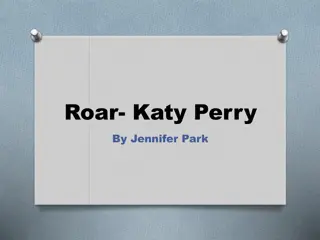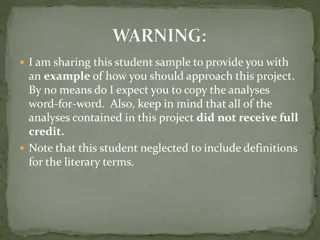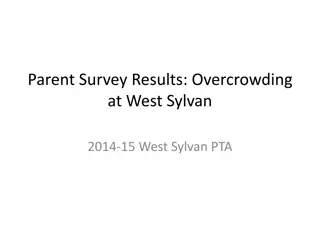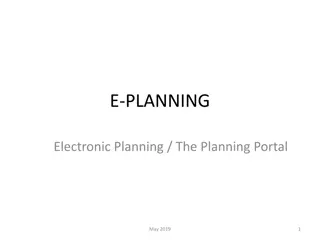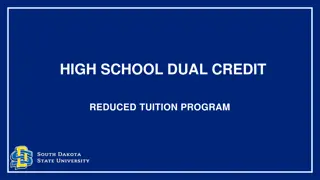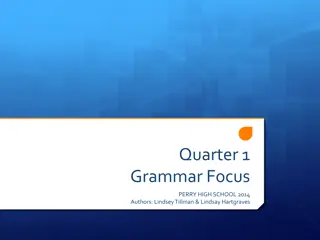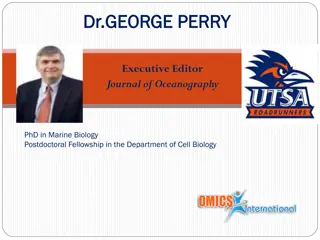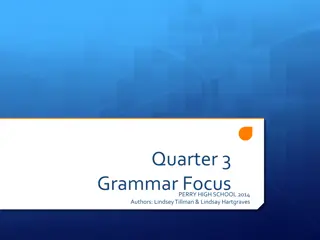Planning Your High School Journey at West Perry
Graduating from West Perry High School, Class of 2028, requires earning 25 credits, with 7 credits attainable each year. To move to the next grade level, you must earn a minimum of 6 credits annually. Proficiency in Algebra, Biology, and Literature Keystone Exams is essential for graduation. Understanding the English, Social Studies, and Science sequences will guide your course selection. Prepare for a fulfilling academic experience by following the outlined graduation plan and subject placement recommendations.
Download Presentation

Please find below an Image/Link to download the presentation.
The content on the website is provided AS IS for your information and personal use only. It may not be sold, licensed, or shared on other websites without obtaining consent from the author.If you encounter any issues during the download, it is possible that the publisher has removed the file from their server.
You are allowed to download the files provided on this website for personal or commercial use, subject to the condition that they are used lawfully. All files are the property of their respective owners.
The content on the website is provided AS IS for your information and personal use only. It may not be sold, licensed, or shared on other websites without obtaining consent from the author.
E N D
Presentation Transcript
4. Planning a Project 4. Planning a Project 1. Stakeholder Management 2. Project Scheduling 3. Budget Planning 4. Risk Management 2 2
Discussion Discussion How useful were the stakeholder management tools? Questions on the tools? How did the team cooperation work? Any intercultural differences? How was your team organised? 3 3
Review Review Project Environment Project Structure Stakeholder Team Culture Objective Organisational Context Organisational Structure WBS 4 4
Project Scheduling Project Scheduling 5
Learning Objectives Learning Objectives After completing this chapter, you should be able to: 1. Be aware of different methods of project time planning 2. Understand how scheduling contributes to achieving project management objectives 3. Be able to apply common scheduling tools on your project 6
Project Scheduling & Planning Project Scheduling & Planning Project Scheduling PMBoK defines it as an output of a schedule model that presents linked activities with planned dates, durations, milestones, and resources. Project Planning The identification of the project objectives and the ordered activity necessary to complete the project including the identification of resource types and quantities required to carry out each activity or task. (PMBoK) Source: PMBoK. 7
Milestone Schedule Milestone Schedule Source: Horine (2013). 8
Ten Steps to Create a Schedule Ten Steps to Create a Schedule Source: Horine (2013). 9
Scheduling Methods Scheduling Methods Gantt Chart Network Diagrams Critical Path Method (CPM) 10
Project Scheduling Terms Project Scheduling Terms Project Network Diagram Project Network Diagram: any schematic display of the logical relationships of project activities Path Path: a sequence of activities defined by the project network logic Event Event: a point when an activity is either started or completed Node Node: one of the defining points of a network; a junction point joined to some or all of the other dependency lines (paths) Predecessors Predecessors: those activities that must be completed prior to initiation of a later activity in the network Successors Successors: activities that cannot be started until previous activities have been completed, these activities follow predecessor tasks Source: Pinto (2015). 11
Network Diagram Exercise: Writing a Term Paper Network Diagram Exercise: Writing a Term Paper 1. Which activities are necessary when writing a term paper? 2. In which sequence/order do these activities take place? 12
Precedence Relationships Precedence Relationships Finish to Start Finish to Start The from activity, Task 1.1, must finish before the to activity, Task 1.2, can start Task 1.1 Task 1.2 13
Precedence Relationships Precedence Relationships Start to Start Start to Start Tasks 1.1 and 1.2 may start at the same time, but the successor (1.2) cannot start until the predecessor (1.1) begins Task 1.1 Task 1.2 The direction of the arrow defines which task is the predecessor and which is the successor 14
Precedence Relationships Precedence Relationships Finish to Finish Finish to Finish Task 1.1 Tasks 1.1 and 1.2 may end at the same time, but the successor (1.2) cannot finish until the predecessor (1.1) finishes Task 1.2 15
Precedence Relationships Precedence Relationships Start to Finish Start to Finish Task 1.1 Task 1.1 must start before Task 1.2 can finish (seldom used) Task 1.2 16
Serial Activities Serial Activities Serial activities are those that flow from one to the next, in sequence. 1.1 1.2 1.3 Identify research Topic Literature search Write outline Source: Pinto (2015). 17
Network Diagram Network Diagram Nonserial Nonserial Sequential Logic Sequential Logic 2.1 2.2 Install library software Further Literature search 3.1 1.3 Draft paper Write outline 1.5 1.4 Write Abstract Feedback from supervisor 18
Concurrent Activities Concurrent Activities When the nature of the work allows for more than one activity to be accomplished at the same time, these activities are called concurrent, and parallel project paths are constructed through the network. 2.1 2.2 Install library software Further Literature search 3.1 1.3 Draft paper Write outline 1.5 1.4 Feedback from supervisor Write Abstract Source: Pinto (2015). 19 19
Complete Activity Network Complete Activity Network 2.1 2.2 Install library software Further Literature search 3.1 1.3 1.1 1.2 Draft paper Write outline Identify research Topic Literature search 1.5 1.4 Feedback from supervisor Write Abstract 20
Quiz Quiz 1) A sequence of activities defined by the project network logic is a(n): a) Event b) Path c) Node d) Route 21
Homework Homework 1. Search for other software/online tools for project scheduling. What are advantages and disadvantages? 2. 2. Additional Reading: Additional Reading: Caughron, J. J., & Mumford, M. D. (2008). Project planning: The effects of using formal planning techniques on creative problem solving. Creativity and Innovation Management, 17(3), 204-215. 22
References References Horine, Greg (2013): Absolute Beginner s Guide to Project Management, Que Sams/Pearson Education, 3rded. Pinto, J. K. (2015): Project management. Achieving competitive advantage, Pearson Education, Harlow, Essex, 4thed. Project Management Institute (2013): A Guide to the Project Management Body of Knowledge: PMBOK(R) Guide, Project Management Institute; 5thed. 23
